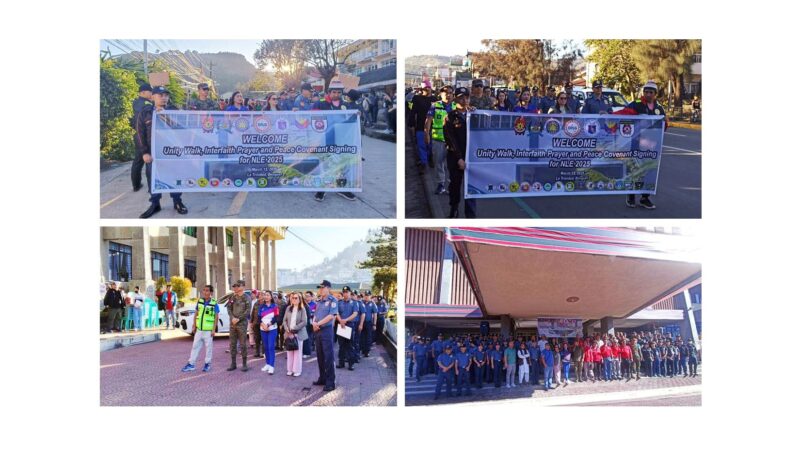EcoWaste Coalition Highlights Toxic Threats from Some Halloween Costumes, Decorations and Toys

28 October 2024, Quezon City. Following the call it made last Friday on event organizers and participants to simplify the Halloween celebrations after severe tropical storm Kristine struck parts of the country, the EcoWaste Coalition now urges the public to be aware of potential dangers associated with some popular spooky stuff.
As children and adults partake in spooktacular Halloween fun, the toxics watchdog group drew public attention to chemical hazards posed by some costumes, decorations, and toys on sale in the market.
As part of its advocacy towards a zero waste and toxics-free society, the group reminded consumers to exercise caution when purchasing Halloween items as many of them are barely labeled, depriving consumers of essential facts, including chemicals in product (CiP) information, to facilitate sound decision-making.
Of the 50 Halloween costumes, decorations, and toys obtained from retail stores in Divisoria, Paco and Quiapo, Manila City, and Cubao, Quezon City last October 26-27, 24 items had no labels and 26 had incomplete labeling information (e.g., no license to operate number, no manufacturer’s or distributor’s markings, etc.).
“Aside from being poorly labeled, the Halloween items we bought do not have valid certificates of product notification and have not been properly evaluated by the authorities for their quality and safety,” said Aileen Lucero, National Coordinator, EcoWaste Coalition.
“We remind consumers to be on the lookout for dangerous chemicals lurking in some unverified Halloween costumes, decorations, and toys,” she added. “Let us insist on our legally protected rights as consumers to ensure safer products for our children.”
The Food and Drug Administration (FDA) has time and again advised consumers not to purchase and use unauthorized toys and childcare articles that have not been duly assessed for their quality and safety, stressing that “the use of such violative products may pose health risks to consumers.”
To educate consumers, the EcoWaste Coalition identified some of the hazards posed by some Halloween costumes, decorations, and toys sold without proper authorization from the FDA.
1. Of the 33 Halloween headbands, lightsticks, and decorative items purchased, 20 have tiny button cell batteries with unsecured covers. A curious child may remove the battery, play with it, and, by accident, ingest or insert it in her or his ear and nose, causing choking and chemical burns, particularly in the digestive tract.
2. All five creepy insect plastic toys were found to contain cadmium (a toxic metal known to cause birth defects and cancer) in the range of 105 parts per million (ppm) to 1,156 ppm, way above the European Union’s limit of 100 ppm for all plastic types. The presence of cadmium in these toys can be attributed to its use as a stabilizer in polyvinyl chloride (PVC) plastic.
3. A PVC-made black Halloween bat, a flying creature connected with the festival, contained 5,107 ppm lead (a brain-damaging and endocrine-disrupting chemical) and 501 ppm cadmium, way in excess of the 1,000 ppm limit for lead in PVC plastic and the 100 ppm limit for cadmium in all plastics under European regulations. Like cadmium, lead is also used as a stabilizer in PVC plastic.
4. Of the nine Halloween lipsticks, face paints, and cream make-ups, none provided information regarding their production and expiration dates. While negative for heavy metals, these products may contain bacteria and other impurities, noting that expired products can harbor bacteria. Using cosmetics past their expiry dates may irritate the skin, clog pores, and cause skin infections. Eight of these nine products were bought at rock-bottom prices of only P5 each (the other one was bought for P10).
5. One toy (a pirate’s telescope) contained 18,780 ppm bromine, indicating that recycled plastic from electronic waste or e-waste containing brominated flame retardants (BFRs) may have been used in making it. BFRs, some of which have been listed as Persistent Organic Pollutants (POPs) under the Stockholm Convention, can leach from products, be released to house dust, and subsequently ingested or inhaled. BFRs are known to cause adverse problems to the developmental, endocrine, immune, nervous or reproductive systems.
6. A “Happy Halloween” decoration set consisting of over 30 latex and foil balloons provided no cautionary statement (CS) to prevent choking incidents. As required by RA No. 10620, or the Toy and Game Safety Labeling Act, balloons must bear the following CS: “Warning! Children under 8 years can choke or suffocate on uninflated or broken balloons. Adult supervision is required. Keep uninflated balloons from children. Discard broken balloons at once.” Luckily, the balloons screened negative for toxic metals.
While lead above the regulatory limit of 90 ppm was not detected in painted Halloween products, the EcoWaste Coalition advised consumers to refrain from purchasing items decorated with bright paints, yellow in particular, unless the paints are certified as lead-safe.
The group used a handheld X-Ray Fluorescence (XRF) analyzer to screen the samples for chemicals of concern.
For a safer, non-toxic, and less wasteful celebration of Halloween, the EcoWaste Coalition encouraged the public to take the following reminders into account:
1. Avoid Halloween costumes, decorations, and toys if the button battery cases can be broken or opened easily. Ensure that the batteries in such products are duly secured with a screw.
2. Avoid unauthorized and unlabeled plastic toys, particularly those made of PVC plastic, which may be laden with cadmium and lead, as well as hormone-disrupting phthalates. Avoid painted toys, which may be coated with lead-containing paints, unless such toys are decorated with lead-safe paints.
3. Avoid plastic costumes and masks. Create costumes from repurposed items to avoid buying pricey ready-to-wear attires and accessories. With some creativity and ingenuity, kids and adults can turn old clothes and fabrics into something fun or scary.
4. Avoid face paints, especially those sold without authorization from the FDA and those without manufacturing and expiry dates. Opt for natural substitutes to face paints, which often lack quality and safety assurance and may contain bacterial and chemical contaminants.
5. Avoid plastic buckets. Instead of plastic pumpkin buckets, encourage children to bring reusable cloth bags, old socks, or their school lunch bags for Halloween treats.
6. Avoid treats in disposable wrappers. Consider healthier alternatives to candies with little nutritional value and often wrapped in plastic that is hardly recycled. Treat kids with wholesome food such as homemade cookies, sandwiches in paper napkins or small paper bags, and fruits in season.
“Halloween and other festive occasions should not pose health and safety risks to the environment and the people, most especially to children who are most vulnerable to toxic exposures,” the EcoWaste Coalition concluded. (PR)
Reference:
Information on Cadmium and Lead
https://www.who.int/news-room/photo-story/photo-story-detail/10-chemicals-of-public-health-concern







